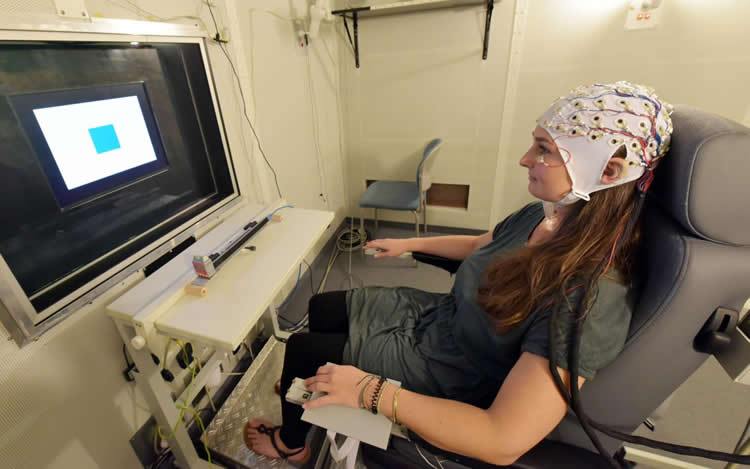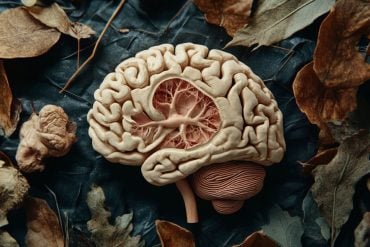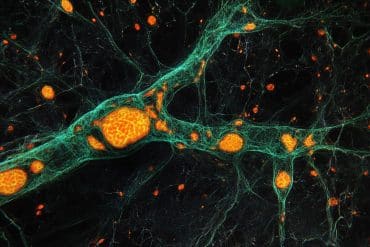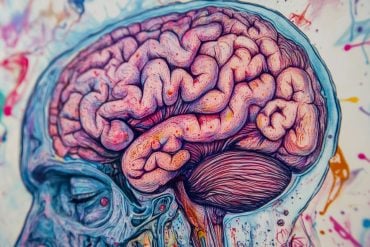Summary: A new study investigates how the brain makes hypnotic states possible. Using EEG, researchers were able to see how hypnosis influences specific regions of the brain while it receives visual stimuli.
Source: Friedrich Schiller University Jena.
Psychologists at Friedrich Schiller University Jena (Germany) aim to develop brain theory of hypnosis.
“In our project, we are looking at how the brain makes hypnotic states possible,” explains Professor Wolfgang Miltner, who has been working on the phenomenon for decades. “First, we looked more closely at the processing of visual stimuli.” In an experiment, they divided participants into three groups: individuals who were very suggestible, i. e. susceptible to hypnosis, individuals of average suggestibility, and a third group with low suggestibility. “While they were under hypnosis, we had them look at a screen on which we showed them various symbols, such as a circle or a triangle,” explains Dr Barbara Schmidt, who conducted the experiment. “The test participants were given the task of counting a particular symbol. At the same time, they were told to imagine that there was a wooden board in front of their eyes. As a result of the suggested obstruction, the number of counting errors rose significantly.” The effects were observed in all three test groups, but were strongest in those participants who were easiest to hypnotise.
In order for the researcher to observe brain activity as well, the test participants were linked up to an electroencephalograph (EEG). “When we look at the neural processes that take place in the brain while processing the symbols, we see that around 400 milliseconds after the presentation of the to-be-counted symbol, there is an extreme reduction in brain activity, although it should normally be very high,” explains Schmidt. “However, a short time before this – up to 200 milliseconds after presentation of the stimulus – there are no differences to be seen.” This means, therefore, that simple perception still takes place, but that deeper processing operations, such as counting, are greatly impaired. In this way, the University of Jena psychologists were able to find out how hypnosis influences specific regions of the brain while it receives a visual stimulus.

Establishing serious hypnosis Research
Further experiments are planned over the years to come. The researchers will be investigating alterations in the processing of acoustic stimuli as well as pain relief during hypnosis. “Until the 1920s, hypnosis was a standard part of medical training and it is being used again today in anaesthesia,” reports Miltner. “However, there is hardly any scientific research examining the reasons why hypnosis works as an anaesthetic.” Unfortunately, there is too much esoteric speculation on this topic, so that scientists working in this area frequently face scepticism. “We no longer have to show that hypnosis is effective, as that has been proven. The task is now above all to find out why and how such curious changes in perception are possible in people who are hypnotised,” says Miltner. “For this reason, we wish to establish hypnosis research that is serious and reputable.”
Funding: The study was funded by German Research Foundation.
Source: Ute Schoenfelder – Friedrich Schiller University Jena
Image Source: NeuroscienceNews.com image is credited to Jan-Peter Kasper/FSU.
Original Research: Full open access research for “The Power of mind: Blocking visual perception by hypnosis” by B. Schmidt, H. Hecht, E. Naumann & W. H. R. Miltner in Scientific Reports. Published online July 7 doi:10.1038/s41598-017-05195-2
[cbtabs][cbtab title=”MLA”]Friedrich Schiller University Jena “Obstructing the ‘Inner Eye’.” NeuroscienceNews. NeuroscienceNews, 7 July 2017.
<https://neurosciencenews.com/hypnosis-theory-eeg-7045/>.[/cbtab][cbtab title=”APA”]Friedrich Schiller University Jena (2017, July 7). Obstructing the ‘Inner Eye’. NeuroscienceNew. Retrieved July 7, 2017 from https://neurosciencenews.com/hypnosis-theory-eeg-7045/[/cbtab][cbtab title=”Chicago”]Friedrich Schiller University Jena “Obstructing the ‘Inner Eye’.” https://neurosciencenews.com/hypnosis-theory-eeg-7045/ (accessed July 7, 2017).[/cbtab][/cbtabs]
Abstract
The Power of mind: Blocking visual perception by hypnosis
The present study investigated the effects of suggestion on the processing of visual stimuli. Participants counted rare visual stimuli presented on a screen, once during a hypnosis condition where they were suggested that their vision of the screen is blocked by a virtual wooden board in front of their eyes and once during a control condition without suggestion. In the hypnosis condition, counting performance was about 20% worse than in the control condition. At the same time, the P3b amplitude of the event-related brain potential was about 37% reduced. Smaller P3b amplitudes were significantly associated with deficient counting performance, and this effect was largest in participants who reported the blockade as real. In contrast, earlier brain responses (N1, P2) that reflect basic processing of the visual stimuli were not affected by the suggested blockade. We conclude that the suggestion of the blockade affects later stages of visual perception, leaving early processes intact. This illustrates the impact of suggestions and the power of mind.
“The Power of mind: Blocking visual perception by hypnosis” by B. Schmidt, H. Hecht, E. Naumann & W. H. R. Miltner in Scientific Reports. Published online July 7 doi:10.1038/s41598-017-05195-2







